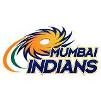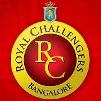Fans maketh the sport, as many marketeers say. Even as people wait for the next edition of IPL, there are signs that this tournament would have to be accommodated as a permanent fixture in International Cricket Council (ICC) calendar. What makes it so compelling? Pure business logic, says Mr Dushyant Singh, Associate Director, Strategic and Commercial Intelligence, Transaction Services of KPMG India.
“The leading clubs in many sports are profitable; Arsenal and Manchester United, two of the leading clubs in European football, both earned EBITDA (a good metric to evaluate profitability) of over 25 per cent in 2007. For the IPL franchisees, we believe that steady EBITDA margins of 30 per cent are achievable by the fifth year,” he shares with Business Line.
And how? “How each IPL franchisee performs would depend on how effectively it builds and monetises its fan base and how well it is able to control its cost structure,” Mr Singh adds. Looks like IPL franchisees could be great IPOs in the making. Read on…
Excerpts from the email interaction:
How quickly do you think all the IPL franchisees will break even?
When the BCCI launched an annual league of city-focused clubs, represented by leading Indian and foreign players, playing Twenty-20 cricket, eight franchisees bid a combined $724 million (Rs 2,900 crore) to own these clubs.
In a sport with no culture of inter-club matches, these amounts were unprecedented. With the unqualified success of the inaugural edition of the Indian Premier League, it is now becoming clear that some of the clubs may break even sooner than they had initially estimated.
We believe that the clubs will be profitable, with most of them likely to break even in the first two years of operation. Not only that, we believe that they can earn substantial profits in the years ahead; the more successful franchises could have revenues of over Rs 150 crore and EBITDA margins of over 35 per cent in five years.
Reports say that two franchisees have made it in the first year…
At the commencement of the IPL season, owners of the various franchises had built plans around reaching break even in the first three years; yes, initial media reports indicate that two franchisees made a profit in the first year itself. However, our analysis indicates that at least two more are close to breaking even.
What is the biggest expenditure for an IPL franchisee?
The single biggest cost item for an IPL club is its annual licence fee to the BCCI; this varies from approximately Rs 26.8 crore, for the Rajasthan Royals, to nearly Rs 45 crore for the Mumbai Indians.
Interestingly against this, revenue comes from three sources — a fixed share of central revenues (sponsorships and rights sold by the BCCI); prize money that depends on the team’s performance; and sponsorships, tickets and merchandise that each franchisee sells directly.
Can you reveal the names of these two franchisees that, according to you, are close to breaking even?
Central revenues earned the clubs a little less than Rs 35 crore this year, more than half of which came from the ten-year media rights that the Sony-WSG combine won for a record breaking $918 million (Rs 3,700 crore). Since the amount earned was the same for all clubs, those that paid less for their franchises (Jaipur and Kolkata, for instance) were automatically closer to breaking even than the rest.
The sales part we understand. What determines a franchisee’s profitability?
While better team performance meant more prize money for some teams, the quantum (Rs 4.8 crore for the winners) was not a major factor in determining profitability. Local sponsorships that franchisees were able to sell were, however.
Teams such as the Kolkata Knight Riders, which sold nearly Rs 30 crore in team sponsorships and in-stadium advertising, were more likely to be profitable than others. Kolkata had another advantage — its home stadium seats 90,000 spectators (nearly twice that of the Wankhade Stadium in Mumbai); this means that despite lower ticket prices, this team was able to earn more from ticket sales than others.
How do you think teams with lower costs performed, financially speaking?
We estimate that different clubs spent between Rs 25 crore and Rs 30 crore each on marketing and administration this year, as they strove to build fan followings. Clubs with the lowest cost bases, and those that were more successful in selling sponsorships and stadium tickets were the ones most likely to break even.
Our analysis shows that both the Rajasthan Royals and the Kolkata Knight Riders earned a profit in the first year itself; we believe that the teams from Chennai and Mohali were quite close to break even as well.
What could be the additional sources of revenue that franchisees may be expected to tap in future?
Going forward, the strategy for each team is clear — maximise revenue from team sponsorships, and increase revenue from ticket sales. Apart from finding more team sponsors, franchisees will try to increase the mix of premium seating in their home stadiums, and generate revenues from F&B (food and beverages) — like multiplex theatres.
While breaking even may be the short-term objective for any franchisee, in the years ahead, most clubs will be looking at the profit margins they can expect to achieve each year and the value they can create for their owners.
How do you compare IPL’s franchisee model with, say, the English Premier League?
The leading clubs in many sports are profitable; Arsenal and Manchester United, two of the leading clubs in European football, both earned EBITDA margins of over 25 per cent in 2007. For the IPL franchisees, we believe that steady EBITDA margins of 30 per cent are achievable by the fifth year; how each IPL franchisee performs would depend on how effectively it builds and monetises its fan base and how well it is able to control its cost structure.
After breaking even, when do you expect most franchisees to really ramp up their revenues?
While the global media rights for IPL were sold for a ten-year period, the annual fees in the first five years are much lower than for the next five. Further, most of the central sponsorships were sold for a five-year period; at the end of this period, these sponsorships will be renegotiated at substantially higher rates. This means that in the sixth year, franchisees can expect their share of central revenues to almost double.
Local revenue streams will grow more steadily. Revenues from stadium gate receipts will grow at about 10 per cent year on year. Sponsorships rates and merchandise sales will rise too, as clubs build on their brand recognition.
As players perform better, do you see franchisees struggling in paying them bigger pay cheques?
On the cost side, the steepest increase will come from player salaries and acquisitions. These account for just over 10 per cent of the cost base today, but we expect them to grow almost six-fold to nearly a quarter of total cost in five years.
Players will, in future, be traded, and IPL franchises that are successful in identifying and nurturing talent could make a profit on ‘trading’ some of their players to other clubs. Replicating a strategy used by leading football and baseball clubs, IPL franchisees will need to develop ‘scouting’ programmes to identify and sign up talent early, and at a lower cost than their competitors.
Even taking fairly conservative revenue growth rates, one can expect some clubs to achieve EBITDA margins of 40 per cent or more by the sixth year. And once the licence fees cease (after ten years), these clubs would have an almost guaranteed profit stream stretching in perpetuity.
IPL in its current format is big. With more teams slated to join, could the bigger size be a constraint?
Growth would need to come from two sources; clubs playing more matches (the UEFA Champions League adds about 15 per cent to the revenues of Europe’s top football clubs), and building a wider fan base — a significant portion of Real Madrid and Manchester United’s revenue comes from sponsorship deals and merchandise sales in Asia. While revenues to a club, from the IPL tournament, can grow almost fourfold over ten years, they would ultimately be constrained by the size of the league itself.
It’s a given that IPL’s size is only going to get bigger. What are the options then for team-owners to make more revenue, after ten years?
Going forward, the ability of an IPL franchise to ‘break out’ and become a large media property depends on how popular Twenty-20 cricket becomes worldwide. This would translate into at least top IPL franchisees growing their revenues substantially by playing more matches against top teams from other leagues — similar to European Champions League where top clubs from various European nation football leagues play against one another. It is estimated that Champions League contributes approximately 15-20 per cent to the total revenues for the top four English clubs.
Source: D. MURALI AccountSpeak.blogspot.com











No Comment
More IPL News
Leave Your Comments Below